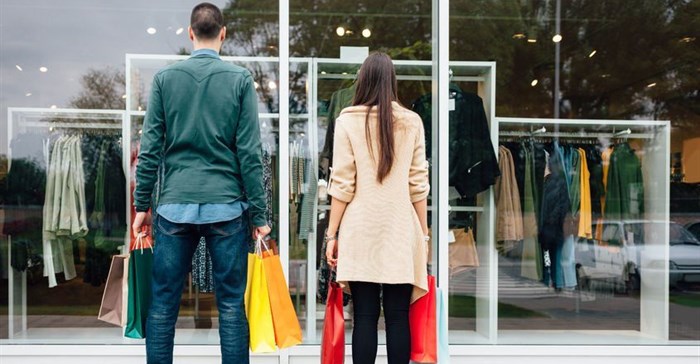Are we moving into an age of gender-fluid purchasing?

While we celebrate Women’s Month in August, we look at how women are shopping and whether it’s fair to say we’re moving into an age of gender-fluid purchasing.
“Thanks to online shopping and retailers taking an omnichannel approach, technology appears to be bringing the era of the ‘Mansumer’ to a close.” The Future of Commerce
The Myth of the Mansumer was a survey done by the Future of Commerce, which studied 1,700 shoppers, questioning them on their shopping experiences. While men and women shared similar thoughts about shopping online and customer service in-store, the study found small differences between the genders when it comes to shopping behaviour.
• 66% of women are more likely than men to care about being able to buy products online and return them in-store.
• Women are more likely to be swayed by social media before buying than men.
• More men than women expect a salesperson to be able to help, both in-store and online.
• 26.4% of women will spend 30 minutes or more on research, as opposed to a slightly larger 32.1% of men.
Overall, the Mansumer findings highlighted women (as well as men) have growing demands with regard to the customer experience. The key take out seems to be that instead of focusing on marketing to women in different ways, make it easy for both genders to “get information about brands, products and purchases both online and in-store, via sales associates and technology".
“77% of women will look to social media reviews to validate buying the product.” Crobox
In his article 'Gender Targeting: The Differences between Men and Women', Richard Johnson writes about the physiological differences in the decision-making processes between women and men. This is particularly interesting when he talks about designing an e-commerce site targeting women.
He believes site design specifically for women should be as follows:
• Messages should be descriptive, using disclaimers and softer words.
• It must end in such a way that it gives the feeling that you understand women and that you will support them.
• Always provide women the ability to connect and converse in order to make a same day sale.
• Utilise Facebook for Business or some other messaging solution to engage female visitors in real time.
• Men tend not to buy into products that are also targeted at women. This is little to do with the differences between the sexes but rather an effect of gender stereotypes, unfortunately, men are influenced by a long history of female discrimination.
“The quickest way to know a woman is to go shopping with her.” Marcelene Cox
Clearly, there are two schools of thought when it comes to how women shop. SEO and e-commerce experts like Richard Johnson make the differentiations we see above, while others believe we should be moving towards a gender-neutral way of selling. The good news is women and men want the see the same improvements made to their shopping experience.
In-store:
• 39% of women and men identified long lines at checkout are their biggest complaint about bricks and mortar shopping.
• 21% found unhelpful salespeople the biggest turn-off.
• 52% of women and men are more likely to shop at stores where employees use devices to speed checkout and look up information.
Online:
• 22% of women and men sited slow delivery as their major online complaint.
• 20% were worried about security online.
• 16.7% were put off by slow or difficult to navigate websites.
"Gen Z women are coming, and today's brands should take notice, and take action." Dalton Dorné́, CMO of Elite SEM
GenZ females are set to outnumber their millennial counterparts in numbers and sales power. How they shop is a blueprint for the future of retail. Here are some key highlights on the stats of GenZ women shoppers from Business Insider earlier this year:
• 64.3% Gen Z females have purchased clothing from Amazon in the past six months.
• 59.1% of Gen Z females are likely to consider buying off-brand/generic goods.
• 47.5% of Gen Z females value "free and fast shipping" as their #1 reason for buying clothing.
“Stop looking at stereotypical gender differences and instead mine data to create a unique, one-to-one relationship with each consumer.” DI Reporter
Looking at the statistics I’ve seen it would be fair to say moving away from gender stereotypes is one key to sustaining business with the upcoming generation of women shoppers. Some brands have already begun to embody this as Entrepreneur reports:
• Make-up brand CoverGirl appointed 20-year-old US internet star James Charles as the brand’s first male ambassador.
• UK based chain of stores John Lewis has already removed all gender-specific labels for their children’s section.
• Barbie has introduced boys in their advertisements to ensure male children who relate to Barbie as normal.
In my opinion, Gen Z and even more so Alpha Gen consumers will be fluid in the way they shop and gender- based retail generalisations will fall away. Watch this space for an update during Women’s Month 2020.















